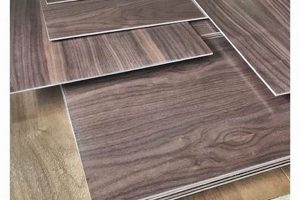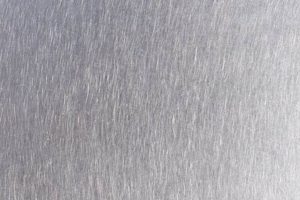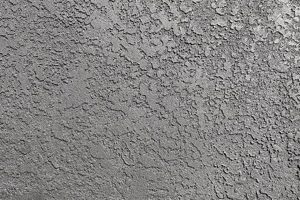A provider of surface treatment solutions, this entity specializes in applying protective and decorative coatings to various materials. Examples of its services include powder coating, liquid painting, and sandblasting. These processes enhance the durability, aesthetics, and functionality of manufactured goods.
Surface finishing plays a critical role in extending product lifecycles, preventing corrosion, and improving overall performance. The ability to apply coatings efficiently and effectively can significantly impact a manufacturer’s ability to compete in the marketplace. Historically, such services were often handled in-house, but outsourcing to specialized companies allows for access to advanced technologies and expertise.
The following sections will delve into the specific coating techniques offered, quality control measures implemented, and industries served by organizations offering comprehensive finishing services. Further discussion will highlight environmental considerations and future trends within the surface treatment sector.
Surface Finishing Best Practices
The following guidelines are intended to optimize the application and effectiveness of surface finishing processes, leading to improved product quality and longevity.
Tip 1: Material Preparation: Thorough surface preparation is crucial. This includes removing any contaminants such as oil, rust, or scale through methods like degreasing, abrasive blasting, or chemical etching. Improper preparation compromises coating adhesion.
Tip 2: Coating Selection: Select the appropriate coating based on the substrate material, environmental exposure, and desired performance characteristics. Factors to consider include corrosion resistance, abrasion resistance, and UV stability. For example, epoxy coatings offer excellent corrosion protection, while polyurethane coatings provide superior UV resistance.
Tip 3: Application Technique: Adhere to the manufacturer’s recommendations for application technique, including spray gun settings, nozzle selection, and application speed. Consistent application ensures uniform coating thickness and appearance.
Tip 4: Environmental Control: Maintain optimal environmental conditions during application and curing. Temperature and humidity can significantly impact coating properties. Consult coating specifications for recommended ranges.
Tip 5: Curing Process: Follow the recommended curing schedule for the chosen coating. Inadequate curing can result in soft, tacky, or brittle finishes. Proper curing ensures the coating reaches its full performance potential.
Tip 6: Quality Control Inspections: Implement rigorous quality control inspections at each stage of the process, from surface preparation to final inspection. This includes visual inspections, thickness measurements, and adhesion testing.
Tip 7: Preventative Maintenance: Regularly maintain application equipment, including spray guns, pumps, and filters. Properly maintained equipment ensures consistent performance and reduces the risk of defects.
These tips underscore the importance of meticulous planning, execution, and quality control in achieving optimal surface finishing results, thus maximizing the value and durability of coated products.
The subsequent sections will discuss advanced coating technologies and emerging trends that further enhance the capabilities of surface finishing processes.
1. Coating Technologies
The breadth of coating technologies employed by an organization offering surface treatment solutions directly determines its versatility and ability to cater to diverse client needs. Powder coating, liquid painting, electrocoating (e-coating), and specialized processes like ceramic coating represent a spectrum of options, each offering distinct advantages in terms of durability, aesthetics, and corrosion resistance. An entity’s capacity to offer a comprehensive suite of these technologies becomes a key differentiator, allowing it to address specific material, environmental, and performance requirements. For example, the selection of powder coating over liquid painting for automotive components often stems from its superior durability and resistance to chipping. Similarly, e-coating provides uniform coverage on complex geometries, making it ideal for intricate metal parts. The availability and expertise in these technologies are critical components of service offerings.
The effectiveness of these technologies is further amplified by advancements in coating materials and application methods. Nanomaterials are increasingly incorporated into coatings to enhance properties like scratch resistance and UV protection. Automated spray systems, coupled with precise process control, ensure consistent coating thickness and minimize material waste. Companies investing in research and development to explore new coating formulations and application techniques gain a competitive edge. Consider the development of self-healing coatings for aerospace applications, which extend the lifespan of aircraft components and reduce maintenance costs. Such innovations showcase the potential for continuous improvement in coating technologies.
In conclusion, a thorough understanding of coating technologies and their respective applications is paramount for ensuring optimal surface treatment outcomes. The ability to select and apply the appropriate coating, coupled with a commitment to ongoing innovation, enables organizations to deliver high-quality, durable, and aesthetically pleasing finishes across a wide range of industries. Challenges remain in balancing performance requirements with environmental considerations, necessitating a focus on eco-friendly coating materials and processes. Ultimately, the successful integration of diverse coating technologies enhances product value and extends product lifecycles.
2. Quality Assurance
Quality assurance within surface finishing operations represents a critical function, directly impacting the longevity, performance, and aesthetic appeal of coated products. The connection between stringent quality control measures and the overall success of specialized finishing providers is undeniable. The implementation of robust QA protocols mitigates the risk of defects such as inconsistent coating thickness, poor adhesion, and surface imperfections, which can compromise the protective capabilities and appearance of finished items. A surface finishing provider’s reputation and competitive advantage are intrinsically linked to its capacity to deliver consistently high-quality results.
Examples of quality assurance protocols encompass visual inspections, adhesion testing via methods like cross-cut or pull-off tests, coating thickness measurement utilizing ultrasonic or magnetic gauges, and corrosion resistance testing through salt spray chambers. These tests are often performed at various stages of the finishing process, from surface preparation to final inspection, ensuring that any deviations from established standards are identified and rectified promptly. In the automotive industry, for instance, rigorous quality assurance is essential to ensure that coatings withstand harsh environmental conditions and maintain their aesthetic integrity over the vehicle’s lifespan. The practical significance of this understanding lies in its capacity to drive continuous improvement, reduce rework, and enhance customer satisfaction.
In summary, quality assurance is not merely a procedural formality but an integral component of a surface finishing provider’s operational framework. It ensures adherence to industry standards, mitigates the risk of product defects, and fosters a culture of continuous improvement. Challenges persist in maintaining consistent quality across large-scale operations and adapting to evolving industry standards. However, embracing advanced technologies and fostering a skilled workforce are essential strategies for overcoming these challenges and reinforcing the vital link between quality assurance and successful surface finishing outcomes.
3. Industry Specialization
Surface finishing providers often strategically focus their expertise on specific industries to gain a competitive advantage. This specialization allows for the development of deep knowledge regarding industry-specific requirements, regulations, and material demands, resulting in more tailored and effective finishing solutions.
- Aerospace Applications
The aerospace industry demands extremely high performance coatings due to stringent safety and performance requirements. Specialization in this area necessitates expertise in coatings that offer exceptional corrosion resistance, wear resistance, and thermal stability. Examples include coatings for aircraft engine components and airframe structures. Compliance with regulatory standards like those set by the FAA is critical.
- Automotive Manufacturing
The automotive sector requires coatings that not only provide aesthetic appeal but also withstand harsh environmental conditions and resist chipping and scratching. Specialization in this area involves expertise in coatings for body panels, wheels, and interior components. Meeting OEM specifications and ensuring color consistency are crucial aspects of this specialization.
- Medical Device Finishing
The medical device industry demands coatings that are biocompatible, sterilizable, and resistant to corrosion from bodily fluids. Specialization requires expertise in coatings for surgical instruments, implants, and diagnostic equipment. Compliance with regulatory standards like those set by the FDA is paramount.
- Construction and Infrastructure
Coatings for the construction and infrastructure sectors must provide long-term protection against corrosion, weathering, and abrasion. Specialization in this area involves expertise in coatings for bridges, pipelines, and structural steel. Factors such as UV resistance and resistance to chemical exposure are key considerations.
Organizations offering comprehensive finishing services may demonstrate strength in one or more of these areas. Evaluating the depth and breadth of their industry focus is important for determining their suitability for specific projects. This allows for access to advanced technologies, specialized knowledge, and proven track records within target markets, leading to improved outcomes.
4. Capacity Capabilities
Capacity capabilities, in the context of a surface finishing provider, directly correlate with its ability to accept and execute projects of varying size, complexity, and volume. The organization’s infrastructure, equipment, and workforce directly determine its capacity. A firm with limited tank sizes, outdated application equipment, or an inadequately staffed quality control department will, by definition, possess constrained capacity. This restriction may disqualify the firm from bidding on large-scale projects or projects with tight deadlines. Conversely, an entity with multiple large-capacity coating lines, automated spray systems, and a robust quality assurance team can handle significantly larger projects and more complex finishing requirements. This capability provides a distinct competitive advantage, allowing the business to serve a wider range of clients and secure larger contracts. For example, a company capable of simultaneously coating thousands of automotive parts can meet the demands of a major automobile manufacturer, while a smaller shop may only be able to handle smaller aftermarket or restoration projects.
Capacity extends beyond sheer physical size. It includes the firm’s ability to manage logistical challenges associated with large-scale projects, such as material handling, storage, and transportation. An organization equipped with sophisticated inventory management systems and efficient logistics operations can process materials more quickly and minimize delays. Furthermore, capacity includes the ability to adapt to changing project requirements. A firm with flexible production lines and a cross-trained workforce can readily adjust to unexpected increases in demand or changes in coating specifications. A real-world example is a surface finishing company that reconfigured its coating lines to accommodate the increased demand for protective coatings during a pandemic. This adaptive capacity allowed the company to remain competitive and continue serving its clients despite unforeseen circumstances.
In summary, capacity capabilities are a critical component of a surface finishing organization’s overall value proposition. These capabilities determine its ability to meet client needs, compete effectively in the marketplace, and achieve sustainable growth. Challenges in managing capacity include balancing resource utilization with fluctuations in demand and investing in infrastructure upgrades while maintaining profitability. Addressing these challenges requires strategic planning, efficient operational management, and a continuous commitment to improving process efficiency and technological capabilities. Ultimately, a surface finishing provider’s capacity capabilities are a direct reflection of its operational efficiency, technological sophistication, and commitment to meeting the demands of a dynamic market.
5. Environmental Compliance
Adherence to environmental regulations is paramount for organizations involved in surface finishing. These regulations, established by governmental bodies, aim to minimize the environmental impact of industrial processes, including the release of pollutants and the generation of hazardous waste. Failure to comply can result in significant penalties, reputational damage, and operational disruptions.
- Waste Management and Disposal
Surface finishing processes generate various types of waste, including spent chemicals, sludge, and contaminated rinse water. Proper waste management involves the segregation, treatment, and disposal of these materials in accordance with applicable regulations. For example, spent solvents used in degreasing operations must be properly contained and disposed of through licensed waste disposal facilities. Failure to do so can lead to soil and water contamination, resulting in substantial fines and remediation costs.
- Air Emissions Control
Many surface finishing operations release volatile organic compounds (VOCs) and other air pollutants. Environmental compliance necessitates the implementation of air emissions control technologies, such as scrubbers, filters, and thermal oxidizers, to minimize the release of these pollutants into the atmosphere. Regulations often specify permissible emission limits and require regular monitoring and reporting. Non-compliance can lead to air quality violations and enforcement actions.
- Water Discharge Permitting
Surface finishing facilities that discharge wastewater into public waterways or sewer systems are typically required to obtain and comply with water discharge permits. These permits specify permissible discharge limits for various pollutants, such as heavy metals and pH levels. Regular monitoring and reporting are essential to ensure compliance with permit conditions. Exceeding discharge limits can result in water pollution and penalties.
- Use of Environmentally Friendly Materials
Increasingly, environmental compliance entails the adoption of environmentally friendly coating materials and processes. This includes the use of water-based coatings, powder coatings, and other low-VOC alternatives. The selection of materials with reduced environmental impact can help to minimize air emissions, reduce waste generation, and improve overall sustainability. Government incentives and tax credits may be available to encourage the adoption of environmentally friendly technologies.
Therefore, Environmental Compliance is a fundamental aspect of sustainable operation and long-term success. Proactive management of environmental impacts, coupled with a commitment to continuous improvement, ensures the longevity and competitiveness of surface treatment providers. Integrating sustainable practices into the business model is essential for mitigating environmental risks and maintaining a positive relationship with regulatory agencies and the communities they serve.
Frequently Asked Questions
The following section addresses common inquiries regarding surface finishing processes and capabilities. Information provided aims to clarify key aspects of surface treatment operations.
Question 1: What factors determine the appropriate coating selection for a given application?
Consideration should be given to the substrate material, environmental conditions, performance requirements (corrosion resistance, abrasion resistance), and aesthetic specifications. Each coating type exhibits unique properties that render it suitable for specific applications.
Question 2: What steps are taken to ensure consistent coating thickness across a component?
Automated spray systems, precise process control, and regular thickness measurements are employed. These methods minimize variations and ensure uniform coverage across the entire surface of the part.
Question 3: How is adhesion between the coating and the substrate verified?
Adhesion testing methods, such as cross-cut tests and pull-off tests, are implemented. These tests assess the bond strength between the coating and the underlying material, ensuring that it meets performance standards.
Question 4: What measures are in place to prevent corrosion of coated parts in harsh environments?
Corrosion-resistant coatings, such as epoxy and zinc-rich primers, are selected. Furthermore, proper surface preparation and application techniques are implemented to minimize the potential for corrosion initiation.
Question 5: What is the typical turnaround time for surface finishing projects?
Turnaround time varies depending on the complexity of the project, the volume of parts, and the coating type. Factors like surface preparation requirements and curing times also influence the overall timeline.
Question 6: What environmental regulations impact surface finishing operations?
Regulations governing air emissions, waste disposal, and water discharge are relevant. Surface finishing facilities must comply with these regulations to minimize their environmental footprint.
In summary, these FAQs offer insight into the crucial elements of the surface finishing process. Addressing these questions demonstrates a commitment to high-quality work and a thorough understanding of the field.
The subsequent sections will delve into case studies that showcase the application of these processes and the benefits of quality surface treatment.
Conclusion
This exposition has clarified critical aspects of surface finishing, ranging from coating technologies and quality assurance to industry specializations, capacity capabilities, and environmental compliance. Consideration of these facets is crucial for stakeholders seeking reliable and effective solutions for product enhancement and protection. A comprehensive understanding allows for informed decision-making and optimized outcomes within diverse applications.
The information presented serves as a foundation for evaluating the capabilities and performance of surface treatment providers. Continued advancements in materials science and process engineering will further shape the industry, demanding vigilance and adaptation to maintain competitiveness and sustainability. Further research and ongoing evaluation are encouraged to remain abreast of evolving trends and best practices in the surface finishing sector.







